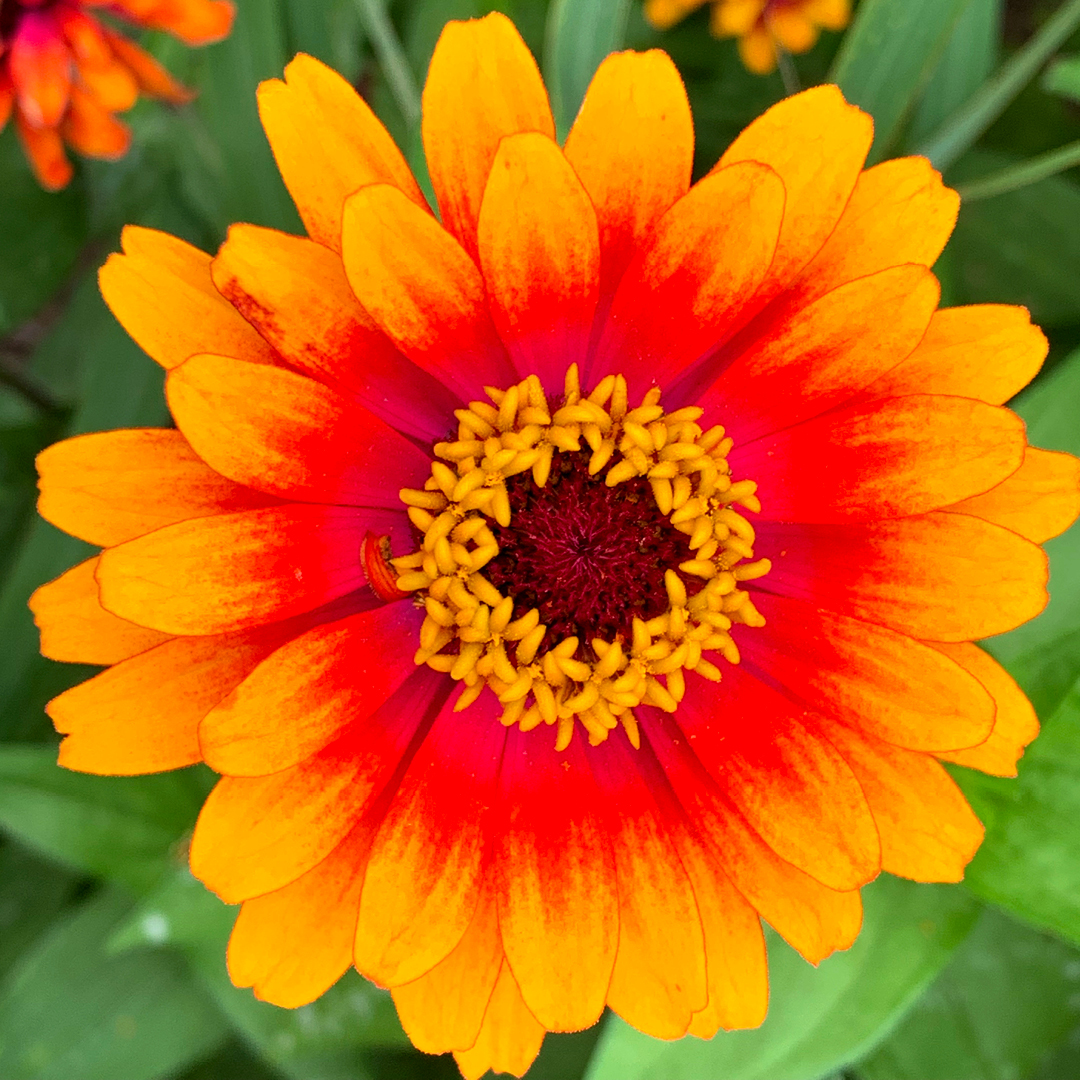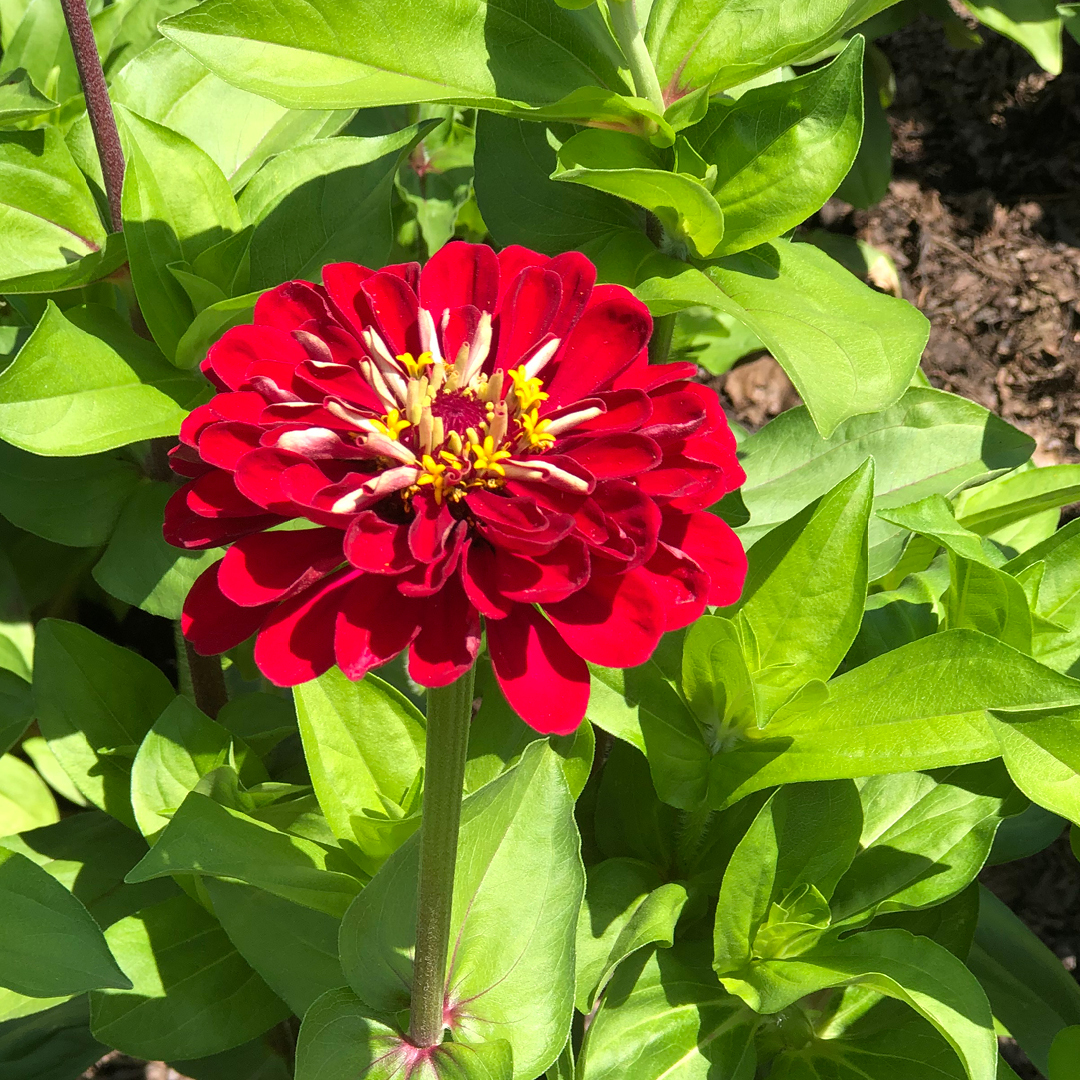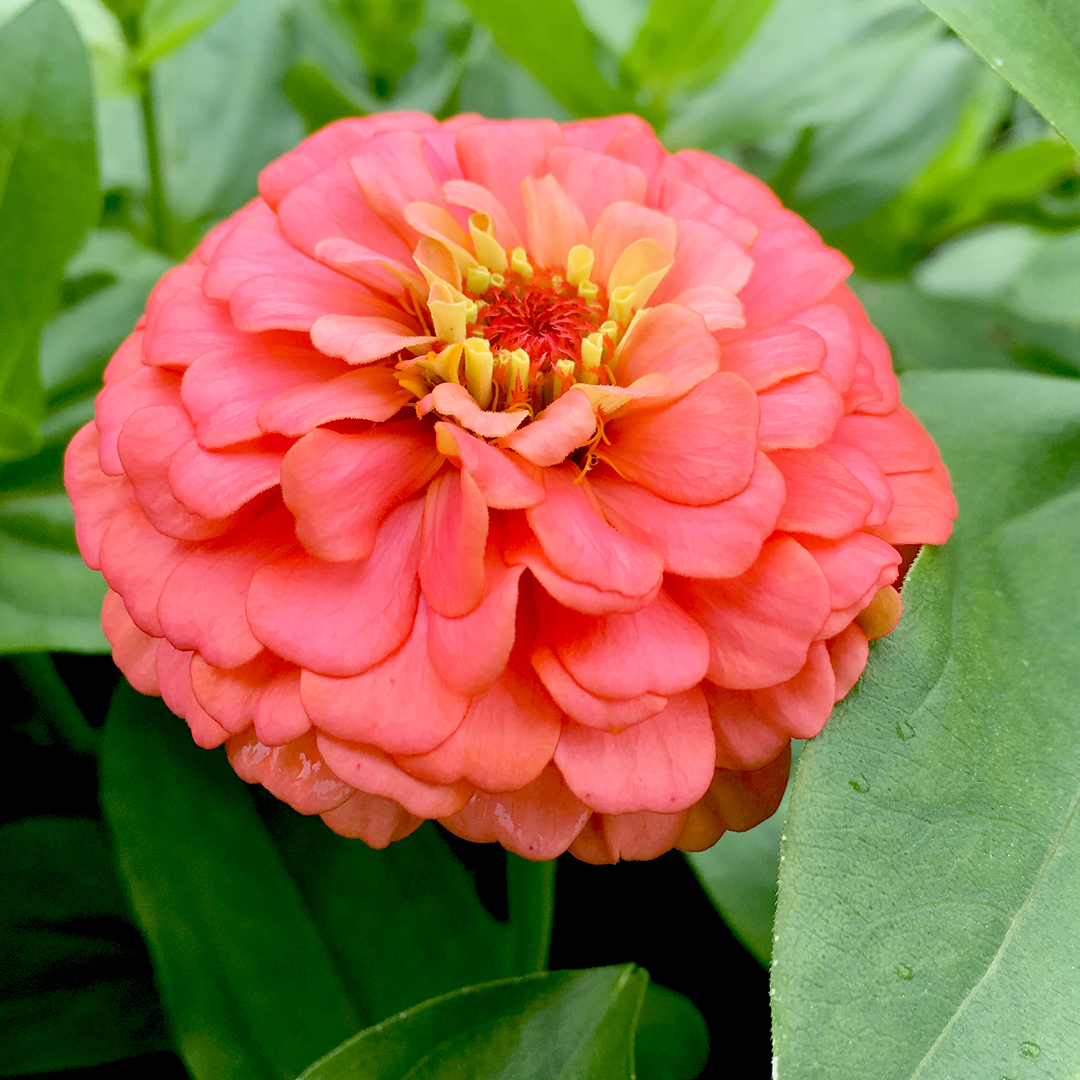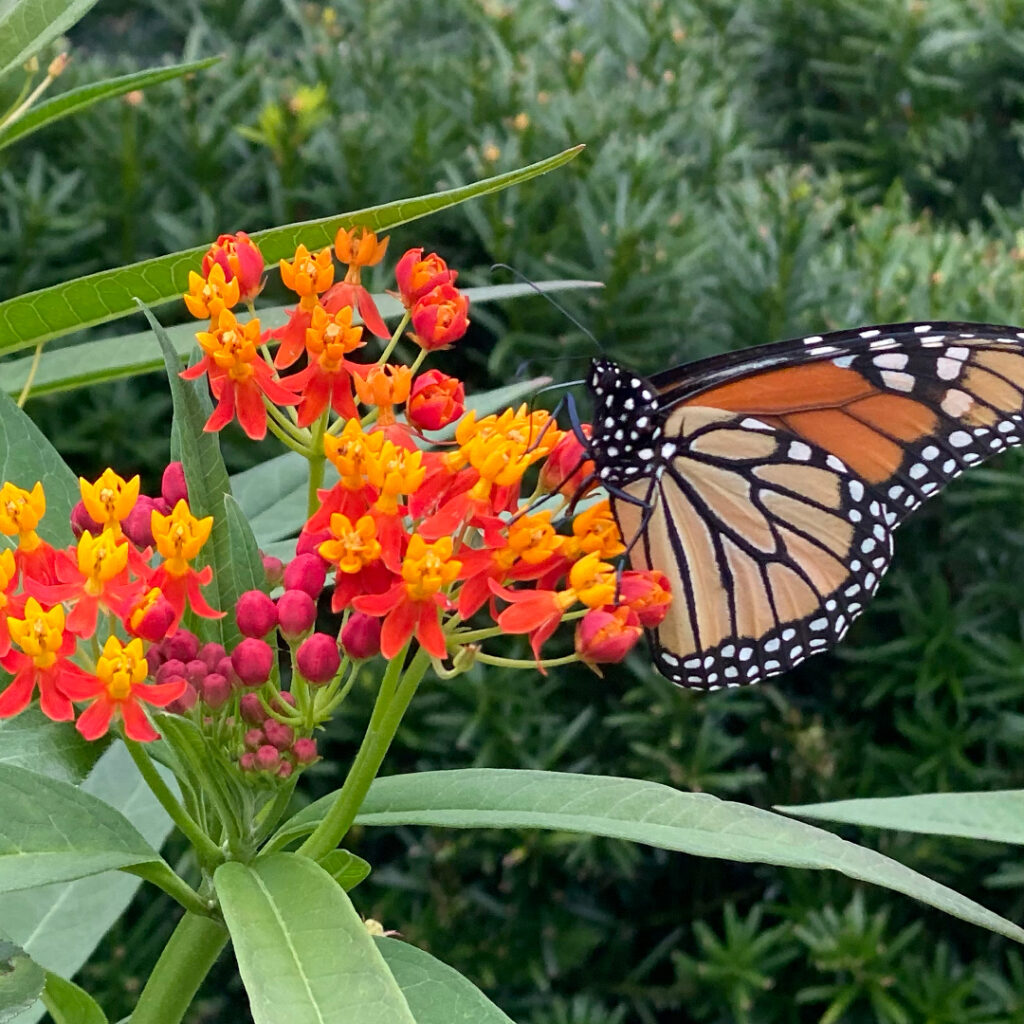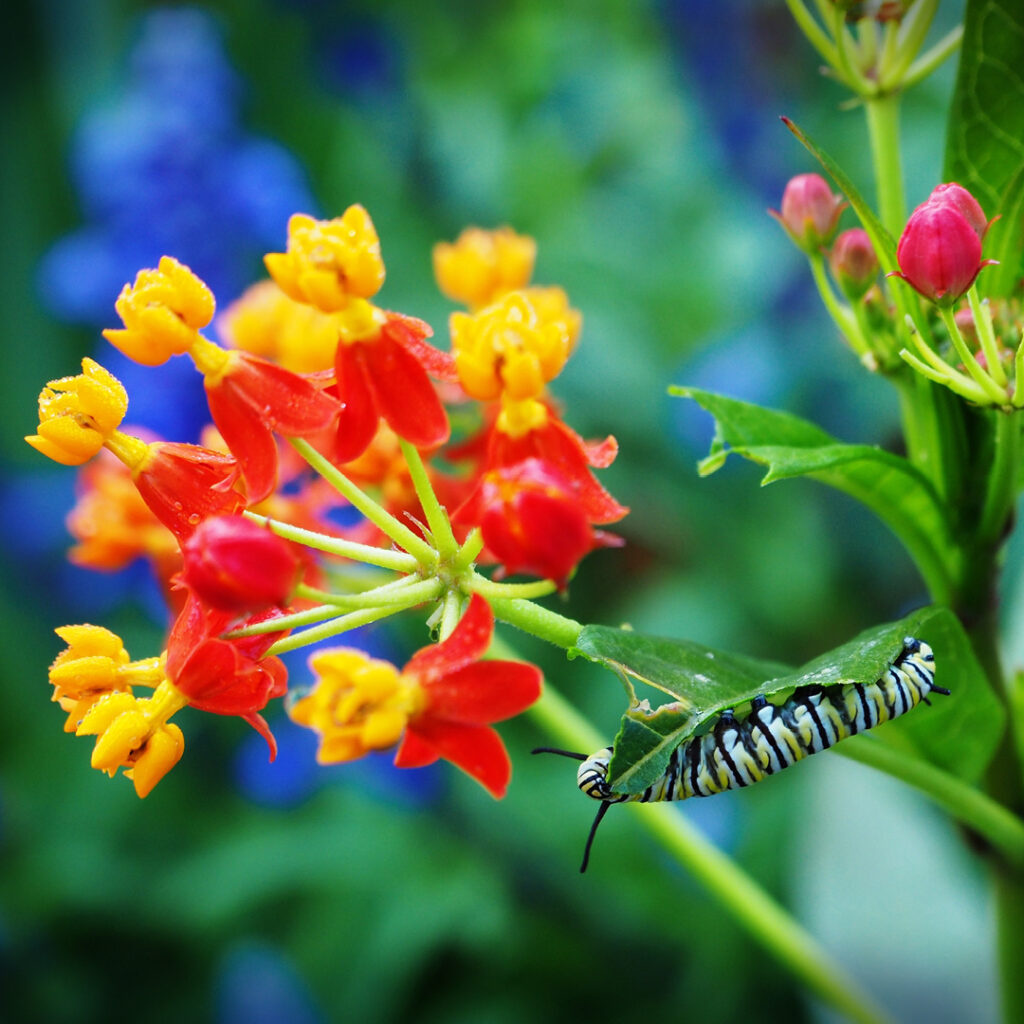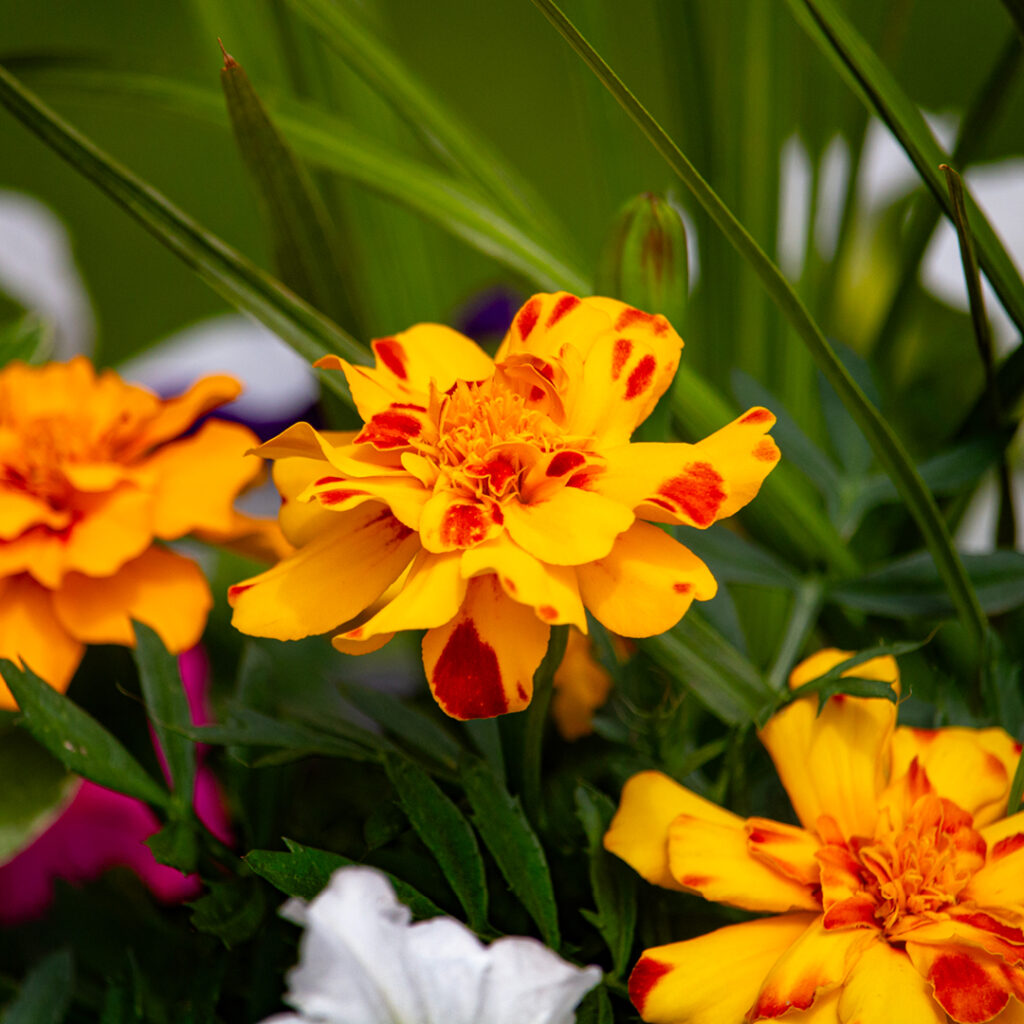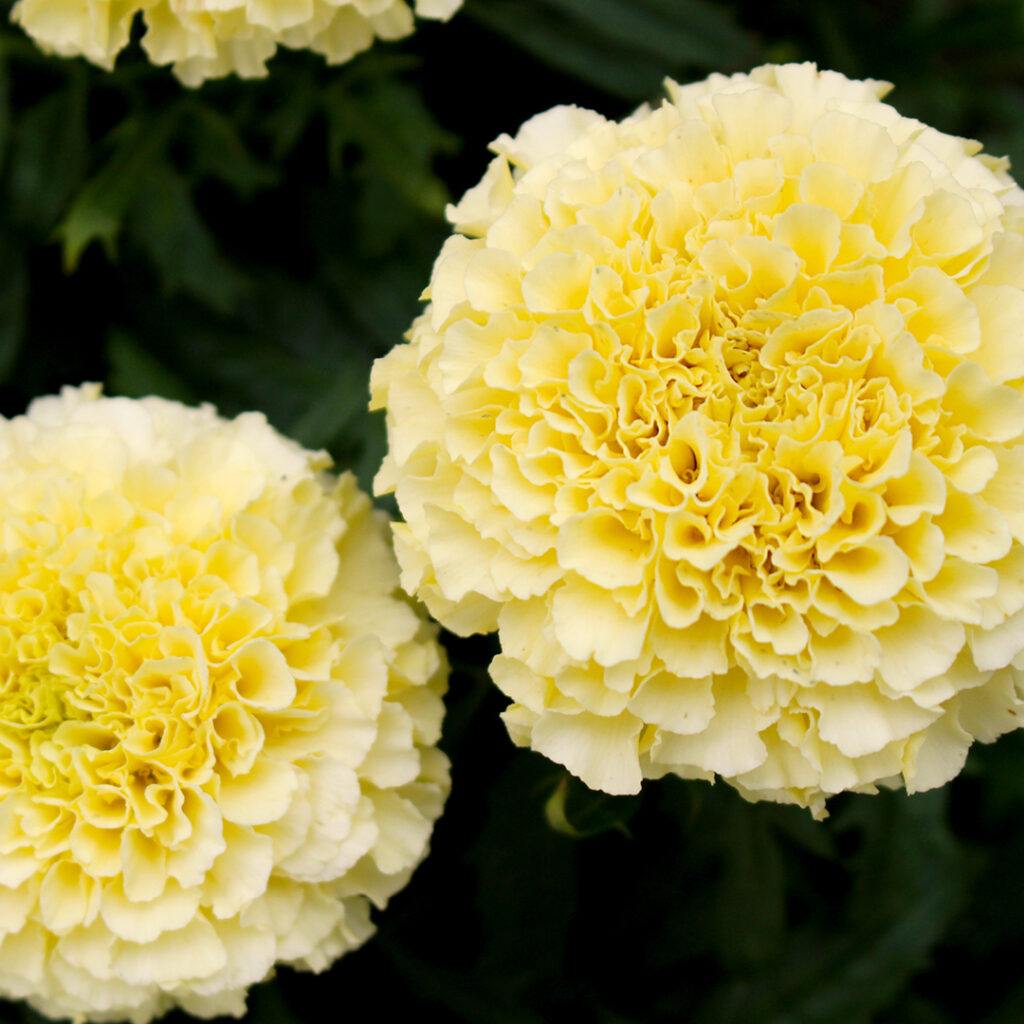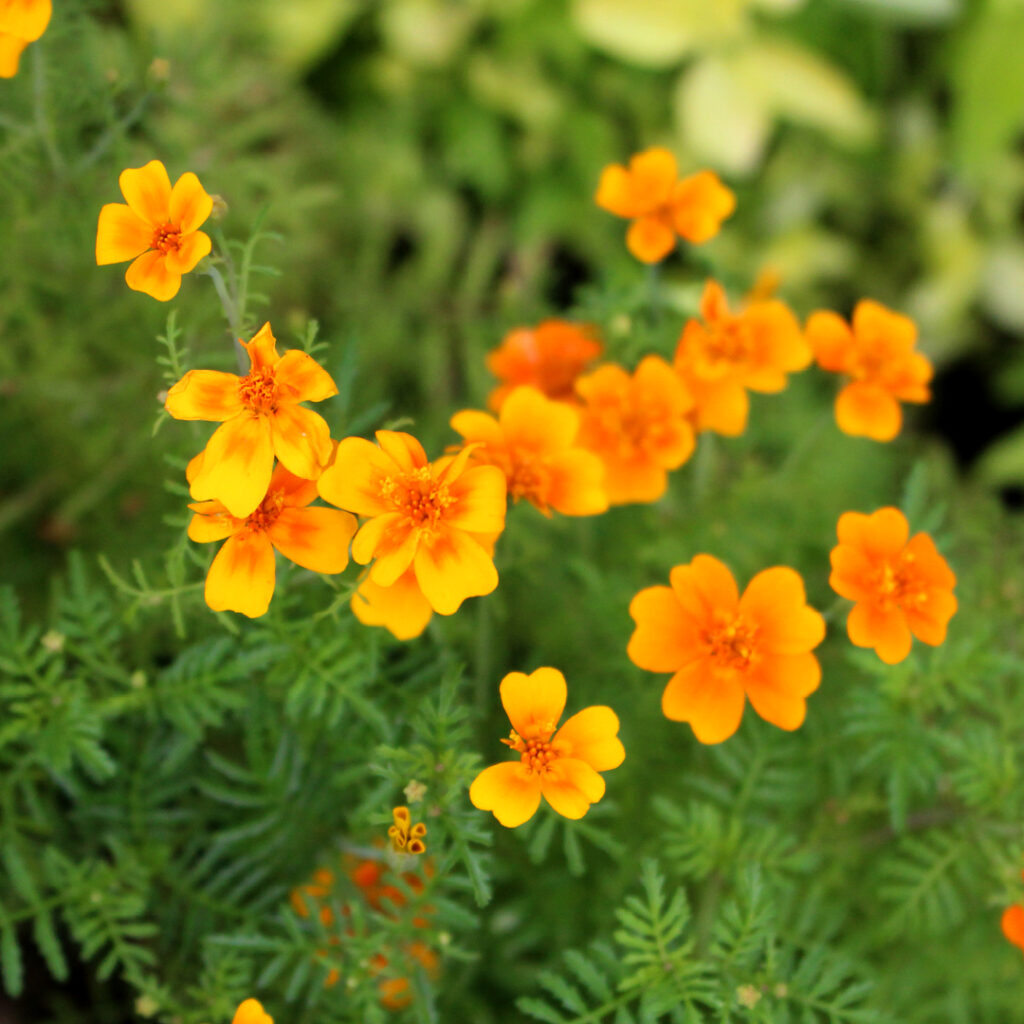With their bright, cheerful flowers, long bloom period, and easy-going nature, Zinnias are an old-fashioned and time-honored favorite in the summer garden. These vibrant annuals, native to Mexico, come in a riot of colors, a variety of forms, and a range of sizes, making them incredibly useful in an assortment of sunny summertime settings.
Usage
Versatile zinnias have multiple uses in the garden.
Garden Beds and Borders
Zinnias are perfect for garden beds and borders, adding a splash of color and attracting pollinators such as bees, butterflies, and hummingbirds. Here’s how they can be used:
- Mixed Borders: Combine zinnias with other annuals and perennials to create a dynamic and colorful border. Their bright hues and varied heights can create layers of interest.
- Themed Gardens: Zinnias are available in a range of colors, making them suitable for color-themed gardens, such as all-white, hot-colored (reds, oranges, and yellows), or pastel gardens.
- Pollinator Gardens: Zinnias attract pollinators, so they can be an essential component of a pollinator-friendly garden, helping to support local ecosystems.
Containers and Window Boxes
Zinnias are excellent choices for containers and window boxes, offering vibrant displays that can be moved and rearranged as needed. They thrive in these environments with proper care:
- Patio Pots: Plant zinnias in containers on patios, decks, or balconies for a burst of color and to create a welcoming atmosphere.
- Window Boxes: Compact zinnia varieties, like those from the ‘Profusion’ or ‘Zahara’ series, are ideal for window boxes, providing bright, eye-level blooms.
- Hanging Baskets: Some zinnia, especially shorter-stature varieties, can even be used in hanging baskets, enhancing the vertical garden.
Cutting Gardens
Zinnias are a staple in cutting gardens due to their long, sturdy stems and vibrant, long-lasting blooms. Here’s how to make the most of zinnias in a cutting garden:
- Variety Selection: Choose tall varieties like ‘Benary’s Giant’ or ‘State Fair Mix’ for their large, showy blooms and long stems, perfect for floral arrangements.
- Continuous Blooms: Regularly deadhead spent flowers to encourage continuous blooming, ensuring a steady supply of fresh flowers for cutting.
- Arrangements: Use zinnias in mixed bouquets with other summer flowers or let them shine alone in simple, elegant arrangements.
Edging and Pathways
Zinnias can be used to line pathways or edge garden beds, providing a clear boundary and a vibrant visual guide through the garden:
- Low-Growing Varieties: For edging, choose shorter varieties like ‘Lilliput Mix’ or ‘Thumbelina,’ creating a colorful border that doesn’t obstruct the view of other plants.
- Pathway Borders: Plant zinnias along garden paths to guide visitors and enhance the overall aesthetic of your garden walkways.
Companion Planting
Zinnias are excellent companion plants, offering various benefits to their neighbors:
- Pest Control: Zinnias attract beneficial insects like ladybugs and lacewings, which help control garden pests such as aphids and whiteflies.
- Vegetable Gardens: Plant zinnias alongside vegetables to attract pollinators and improve crop yields. They are particularly effective when paired with tomatoes, beans, and squash.
Mass Plantings
For a dramatic and bold statement, mass plantings of zinnias can create a sea of color:
- Flower Beds: Fill entire flower beds with a single variety or mix of zinnias for a cohesive, eye-catching display.
- Empty Spaces: Plant zinnias in perennial gardens or flower borders to fill in the empty space after other plants have finished blooming.
Planting
One of the most alluring features of Zinnias is their easy-care nature. For earlier blooms, they can be sown directly into the garden after the last frost date or started indoors 4-6 weeks before the last frost. Depending on the variety, seeds take 75 to 90 days to maturity and therefore may be directly sown as late as three months from the first frost date in the fall.
Choose a location with full sun, as zinnias need at least 6-8 hours of sunlight daily to thrive. This annual prefers well-drained soil rich in organic matter. Amend the soil with compost if needed to improve fertility and drainage. Sow seeds 1/4 inch deep and space them 6-18 inches apart, depending on the variety, to ensure good air circulation and reduce the risk of disease. Provide support for tall varieties.
Care
Zinnias should be watered regularly, but avoid overhead watering to prevent leaf spot and powdery mildew. Water at the base of the plant to keep foliage dry. To further reduce disease, plant zinnias to allow for good air circulation. Mulch around plants to conserve soil moisture and reduce weed pressure. Apply a balanced, all-purpose fertilizer every 4-6 weeks to promote healthy growth and abundant blooms. Remove spent flowers regularly to encourage continuous blooming and prevent the plant from setting seed too early. Monitor the plants for common pests like aphids and spider mites. Use insecticidal soap or neem oil if infestations occur.
Zinnias are a garden favorite for a reason. Their bright, cheerful blooms and low-maintenance nature make them an excellent choice for adding color and interest to summer garden beds and containers. With such a wide variety of cultivars to choose from, there is bound to be a zinnia to suit every gardener’s taste and color palette.
